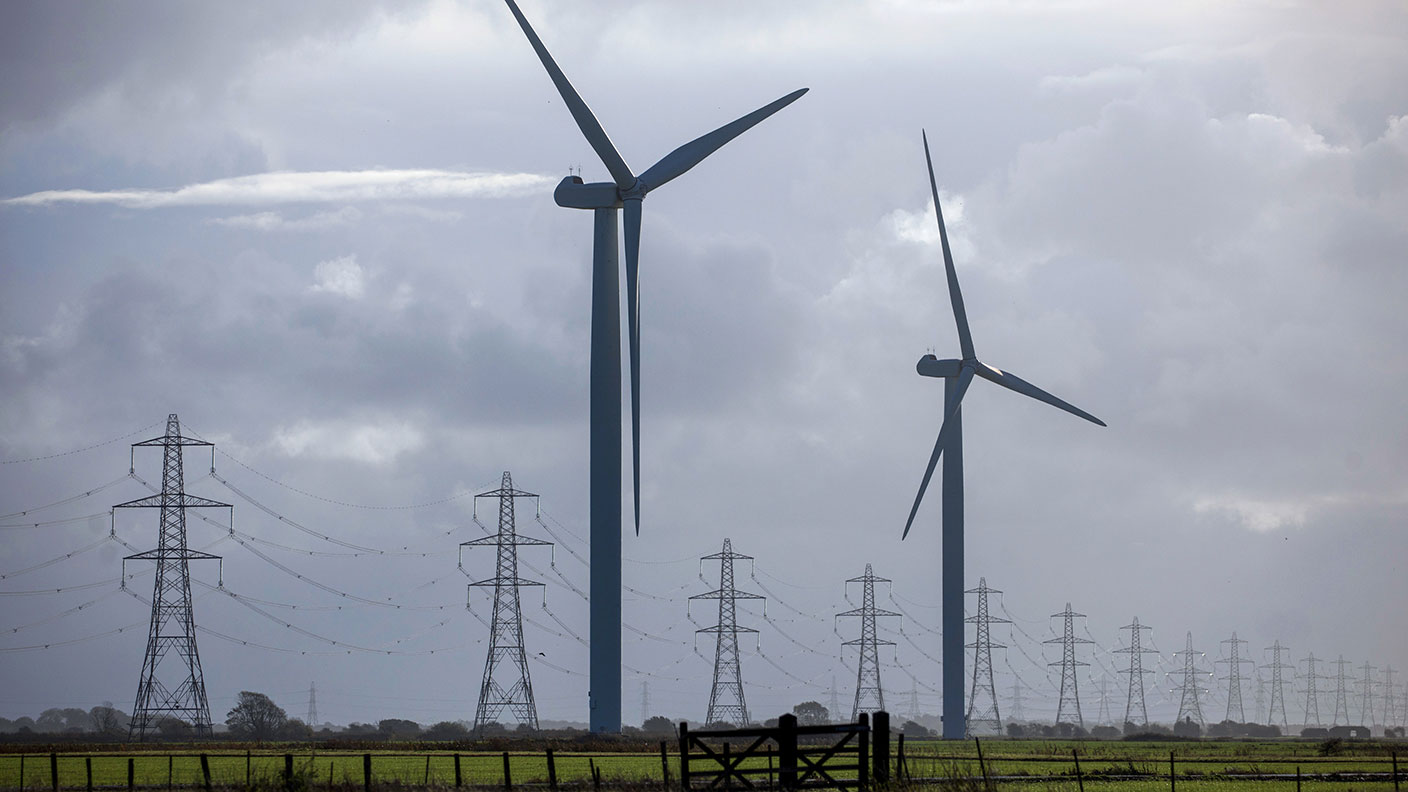Where to find sustainable growth in renewable energy
The renewable energy sector has come a long way, but there is still plenty of momentum in funds and utility stocks.

When the coalition government set a target of 30% of the UK’s electricity supply to be met from renewable resources by 2020, it was ridiculed. In 2010, renewables had accounted for just 7% of supply. The target seemed absurdly ambitious and ruinously expensive given that renewable energy required heavy subsidies. Yet renewable generation reached 45% of supply this year and our carbon emissions have fallen by 29% in ten years. Such has been the fall in equipment and installation costs that a rising number of new onshore wind and solar farms are subsidy-free.
Power at a premium
Investors have benefited from the creation of a 13-strong renewable-energy sector within investment funds. Share prices, however, trade at a 20% premium to net asset value. Though electricity prices are now rising as demand recovers from the lockdown lows, UK demand is in long-term decline, having fallen by 15% since 2005. The go-ahead for Sizewell C would at least maintain the long-term market share of nuclear at 20%, leaving renewable energy to compete with the most efficient and versatile gas-powered generation. Dividend yields ranging from 5%-6.7% are certainly attractive, but are they sustainable without higher long-term demand or prices?
Several of the funds have assets in the EU too, but that renewable energy market is as developed as the UK. Only in the US, where renewables account for just 17% of electricity output, does there seem to be much room for growth. In addition, the growing enthusiasm from the governments of developed countries for “green new deals” should worry investors, implying large-scale expenditure without regard for investment return.
MoneyWeek
Subscribe to MoneyWeek today and get your first six magazine issues absolutely FREE

Sign up to Money Morning
Don't miss the latest investment and personal finances news, market analysis, plus money-saving tips with our free twice-daily newsletter
Don't miss the latest investment and personal finances news, market analysis, plus money-saving tips with our free twice-daily newsletter
Jean-Hugues de Lamaze, investment manager of Ecofin Global Utilities & Infrastructure (EGL, of which I am a director) is more optimistic. “While electricity consumption in the US and Europe has been stagnant in the last decade,” he says, “there is likely to be demand growth from the displacement of fossil fuels in road transport, the heating of homes, industrial automation and in the production of hydrogen for fuel cells. Though about 200 gigawatts of new wind and solar-power generation capacity was added worldwide in 2019, [the annual pace] will need to more than double over the next three decades to reach the 2050 zero net-carbon emissions target.” He argues that the prices paid in private-equity transactions across the infrastructure spectrum have been far higher than in listed infrastructure funds. “For example, recent transactions have valued offshore wind assets at nearly double their invested capital. This suggests that listed infrastructure valuations still need to fully price in the global decline in interest rates.”
The top tips
However, the best opportunity lies in utilities transitioning to renewable energy. Since 2005, European utilities have retired 40% of their coal plants. RWE (Frankfurt: RWE), still Europe’s largest emitter of carbon dioxide in 2018, is now its third-largest renewable energy generator. The stock has trebled in five years.
North America’s largest electricity generator, NextEra (NYSE: NEE), plans to raise renewables from 10% of generation to 30%-40% by 2030, according to its chief financial officer, Rebecca Kujawa, with “renewables now the lowest-cost means of power generation. This is the best environment for renewables development we have ever been in and it keeps getting better, offering 6%-8% annual growth for a long time”, she says.
The upshot is that the specialist renewable-energy funds, especially those with international expertise, are still attractive, while what many regard as “boring old utilities” are becoming growth businesses
Get the latest financial news, insights and expert analysis from our award-winning MoneyWeek team, to help you understand what really matters when it comes to your finances.

Max has an Economics degree from the University of Cambridge and is a chartered accountant. He worked at Investec Asset Management for 12 years, managing multi-asset funds investing in internally and externally managed funds, including investment trusts. This included a fund of investment trusts which grew to £120m+. Max has managed ten investment trusts (winning many awards) and sat on the boards of three trusts – two directorships are still active.
After 39 years in financial services, including 30 as a professional fund manager, Max took semi-retirement in 2017. Max has been a MoneyWeek columnist since 2016 writing about investment funds and more generally on markets online, plus occasional opinion pieces. He also writes for the Investment Trust Handbook each year and has contributed to The Daily Telegraph and other publications. See here for details of current investments held by Max.
-
 MoneyWeek news quiz: How much can you win in Premium Bonds?
MoneyWeek news quiz: How much can you win in Premium Bonds?Quiz Premium Bonds, ChatGPT, and the start of the festive season all made headlines this week. How closely were you following the news?
-
 Salary sacrifice pensions cap: 3.3 million workers to be hit by contribution limits
Salary sacrifice pensions cap: 3.3 million workers to be hit by contribution limitsThe government has revealed further details of its controversial cap on pension contributions through salary sacrifice. Here is how the changes could affect you
-
 Big Short investor Michael Burry closes hedge fund Scion Capital
Big Short investor Michael Burry closes hedge fund Scion CapitalProfile Michael Burry rightly bet against the US mortgage market before the 2008 crisis. Now he is worried about the AI boom
-
 The global defence boom has moved beyond Europe – here’s how to profit
The global defence boom has moved beyond Europe – here’s how to profitOpinion Tom Bailey, head of research for the Future of Defence Indo-Pac ex-China UCITS ETF, picks three defence stocks where he'd put his money
-
 Profit from a return to the office with Workspace
Profit from a return to the office with WorkspaceWorkspace is an unloved play on the real estate investment trust sector as demand for flexible office space rises
-
 New frontiers: the future of cybersecurity and how to invest
New frontiers: the future of cybersecurity and how to investMatthew Partridge reviews the key trends in the cybersecurity sector and how to profit
-
 An “existential crisis” for investment trusts? We’ve heard it all before in the 70s
An “existential crisis” for investment trusts? We’ve heard it all before in the 70sOpinion Those fearing for the future of investment trusts should remember what happened 50 years ago, says Max King
-
 8 of the best properties for sale with wildlife ponds
8 of the best properties for sale with wildlife pondsThe best properties for sale with wildlife ponds – from a 16th-century house in the Ashdown Forest, to a property on Pembrokeshire’s Preseli Hills
-
 Why a copper crunch is looming
Why a copper crunch is loomingMiners are not investing in new copper supply despite rising demand from electrification of the economy, says Cris Sholto Heaton
-
 Where to look for Christmas gifts for collectors
Where to look for Christmas gifts for collectors“Buy now” marketplaces are rich hunting grounds when it comes to buying Christmas gifts for collectors, says Chris Carter
